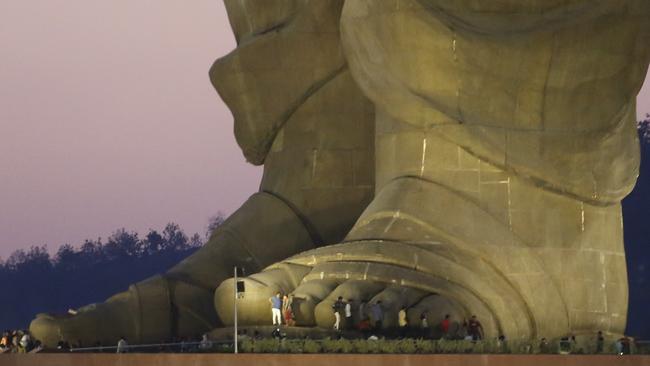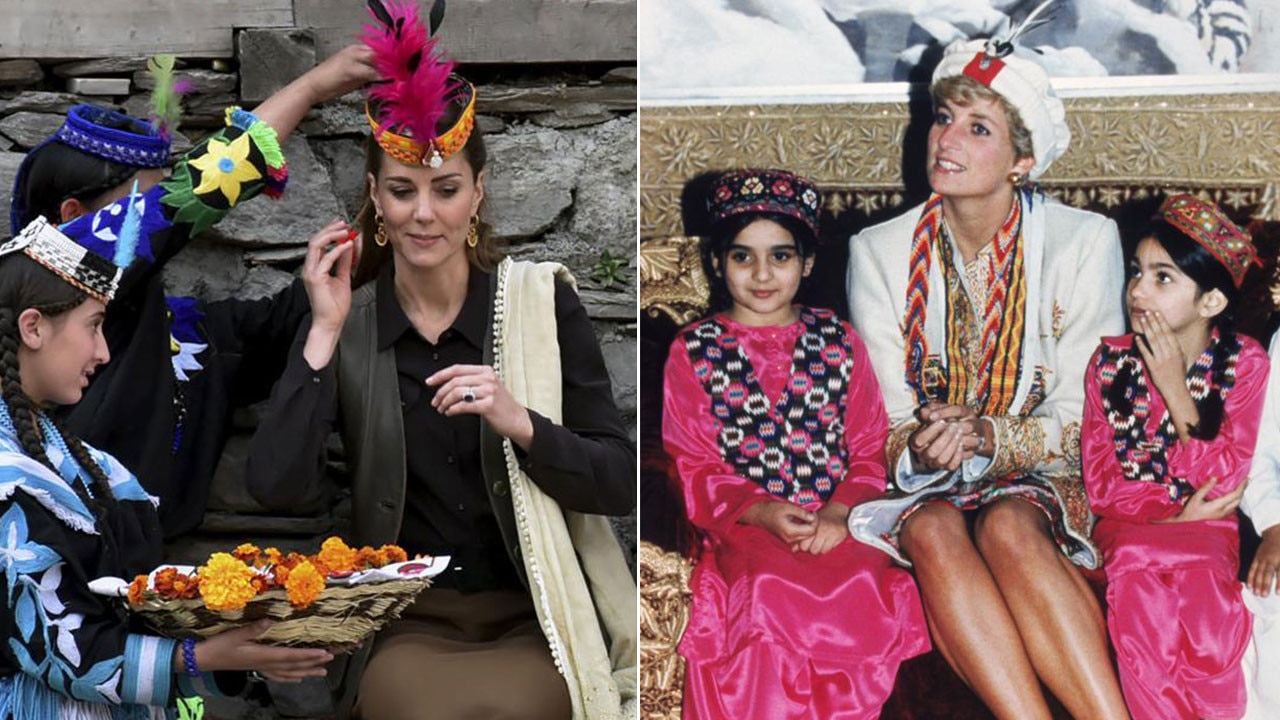Unveiling of world’s tallest statue divides critics
India’s 182m Statue of Unity is proving anything but, dividing critics as it was unveiled to the world amid controversy and congratulations.
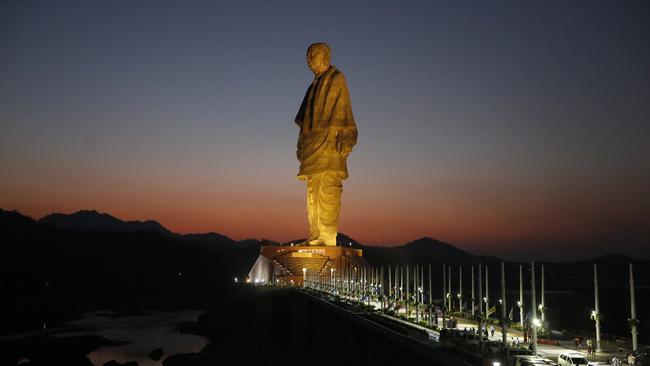
The world’s tallest statue was inaugurated by the Indian prime minister yesterday in an extravagant ceremony that marked the unofficial launch of an election campaign and provoked a row over its $595 million cost.
Standing at 182 metres, it dwarfs the Statue of Liberty, and is a tribute to the independence leader Sardar Patel.
It has risen steadily over the past three years on the banks of a river in Gujarat, the home state of Narendra Modi, who has an eye on a general election due in the spring.
As military aircraft scattered petals on the statue, Mr Modi said: “It is one of the greatest moments in my life today. Because of your blessings, I have been given the honour to be the one who dedicates this amazing statue to the nation. No Indian will ever forget this day.”
The Statue of Unity, as the vast bronze is known, is about twice the height of the Statue of Liberty and has far surpassed the Spring Temple Buddha in China, which at 128m was the previous tallest.
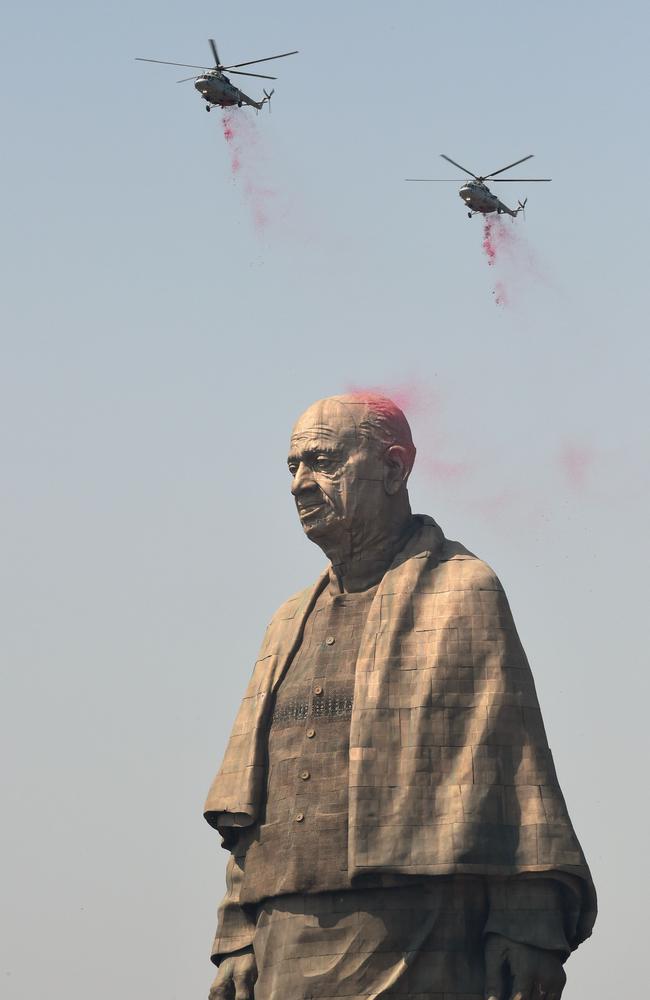
Not all the locals are enamoured with it and protests have been held at the site by farmers who have not been paid for months in a state governed by Mr Modi for years as chief minister before he and his Bharatiya Janata Party (BJP) swept to power in 2014.
Short reign as tallest statue
The statue is expected to be surpassed within three years by an even taller statue of a Hindu king planned for Mumbai harbour. Together, the two will cost $1.265 billion, provoking criticism that Mr Modi is wasting vast sums on nationalist vanity projects while millions of Indians languish in poverty.
The government has defended the statue as a new pinnacle in Mr Modi’s “Make in India” initiative, yet opponents have jibed that many of its panels were made in China because India did not have a foundry big enough.
The two sides have also squabbled over who can rightfully claim Patel’s legacy. The “Iron Man of India”, who was born in Gujurat, organised the campaign of civil disobedience that helped to end British rule then served as deputy prime minister in the country’s first government in 1947. He played a key role in persuading feuding princely states to join the new India. Although Patel was a leader of the Indian National Congress, now the main opposition to the BJP, Mr Modi has claimed him as his own and lamented that he was not India’s first prime minister.
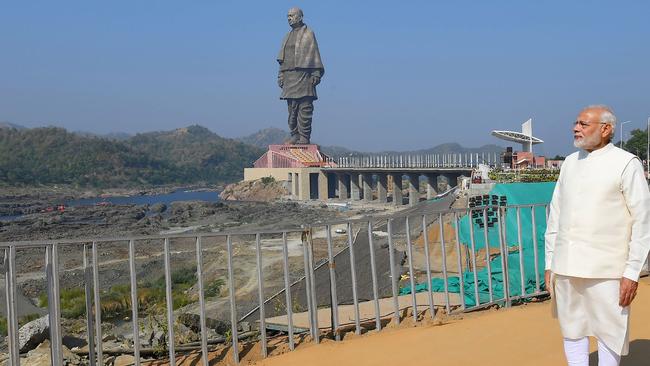
The statue due for Mumbai is to depict the Hindu king Shivaji, at a cost likely to exceed $631 million.
A symbol of Hindu sovereignty and resistance to India’s former Muslim rulers, Shivaji is also a hero to nationalists. The plans envisage a 126m effigy on a pedestal, with the whole structure being 212m high.
Local protesters say that taxpayers’ money should be spent instead on education, infrastructure and food.
The government expects the statue to attract 2.5 million tourists a year and generate huge revenues.
Visitors will be able to survey the surrounding landscape from a viewing gallery in the statue’s chest, at a height of 153 metres.
— The Times
